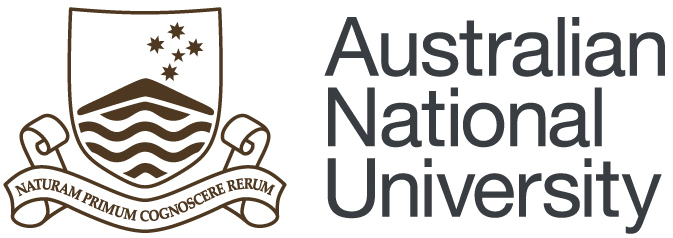Description: The evolution of a Moodle course and its assessment, over seven years, at three institutions on two continents, will be discussed. The course "ICT Sustainability" was commissioned by the Australian Computer Society and first run for professional development of its members in 2009. The course was then adapted for graduate students at the Australian National University and later for undergraduates at Athabasca University (Canada). The latest adaptations are MOOC style courses using Open edX at ANU and Moodle at Athabasca. The way the content and assessment for different versions of the course have evolved will be discussed, including the use of instructor assessment of conventional long-form assignments, student forums, quizzes and peer assessment.
These are the notes for the presentation using HTML Slidy. If viewing the slides you can press "A" to display these notes (and press "A" again to hide them). To advance to the next slide, press "page down", or click the left mouse button.
Computer and telecommunications (ICT) equipment is powered by electricity. If the electricity is generated by burning fossil fuel, this releases carbon dioxide (CO2) into the atmosphere. The CO2 is a greenhouse gas, which traps sunlight, causing global warming.
A carbon emissions audit for the the Australian Computer Society (ACS), reported in 2007 that 1.52% of Australian carbon emissions were attributable to computers and telecommunications equipment.
In 2008, the ACS, commissioned an e-learning course in "Green ICT Strategies", to train professionals in how to measure and reduce CO2 emissions. The course was designed by Tom Worthington.
The course was first run by ACS, in February 2009 as "Green ICT Strategies" (later renamed "Green Technology Strategies"), with students who are working in the ICT industry.
The ACS course is offered through Open Universities Australia as "Green Technology Strategies and also had been adapted by two universities.
The ACS course was modified slightly are run by Tom Worthington in the graduate program of Australian National University (ANU) from July 2009 as Green Information Technology Strategies, COMP7310 (later renamed ICT Sustainability). A North American version of the course was developed by Brian Stewart (one of the graduates of the ANU course) for Athabasca University (Canada) in 2011 as "Green ICT Strategies".
Two free open versions of the course have been produced. The Athabasca University version converted to a free open course in 2014(?): "Computer Science: Green Information and Communications Technology Strategies". Part of the ANU course version was converted to an Edge edX MOOC in 2014: "ICT Sustainability", by Hao Wu, as a research project (supervised by Tom Worthington).
Both versions use some videos and quizzes. Neither is intended as part of a formal degree program.
The course was designed as part of the ACS Computer Professional Education Program, which uses a Constructivist e-Learning approach, derived from that of the UK Open University.
The which consists of three core, compulsory courses and one elective. Green ICT was added to the electives, using the same format as other courses. On-line content is provided for 12 weeks of student work, with weekly text based discussion forums and assignments.
The course covers how to assess, and develop a strategies to reduce, the carbon footprint and materials use of the ICT operations of an organisation. This is in the context where computers and telecommunications are threat to the environment through increased electricity consumption (leading to carbon emissions and global warming) and increased toxic waste from rapidly obsolete equipment. Students are expected to have a degree in ICT. Those completing the course are expected to be preparing carbon accounting reports for organisations, including those required under carbon accounting legislation.
The course objectives and assessment items are based on the skills definitions for “Sustainability Assessment” and “Sustainability Strategy” at level 5 of the Skills Framework for the information Age (SFIA).
The course notes used by ACS students were released under a Creative Commons open access license. This allowed the material to be revised for use at the Australian National University in July 2009. This version was then further revised and used for ACS students in the next semester. This approach allowed the more rapid revision of material than would be possible with a a conventional textbook, and with more resources available than if the notes were just used by one institution.
As the notes evolved, it became clear that some of the administrative procedures would need to be separated from the subject content. As an example, different educational institutions use different assessment procedures, such as grading scales and proportion of marks for weekly work and assignments. The use of the Learning Management System (LMS) made it possible to remove the administrative detail from the course notes and rely on them being available from other documents in the system. This also removes some burden from the student to have to read through the same standard material for each course they are undertaking: if the student can see it is the same link from the LMS for all courses, then they need read it only once.
While it may seem useful to have requirements for an assessment to be as detailed and specific as possible, this may not be the case. Courses which are part of an overall program should have consistent requirements. Thus it should not be necessary to restate the details common to all assessment in every assessment item or in every course. This is particularly the case where a LMS is used. The National Quality Council's “Ideal Characteristics of an Assessment Tool” include the details of how assessment is to be recorded, which can be dealt standardised by the institution by using an LMS.
The course was originally prepared using the web based course authoring tools in the Moodle Learning Management System (MLS). The ACS, ANU and Athabasca University all use the same LMS, allowing simple transfer of the course-ware between systems, via the Moodle backup and restore function.
The first version of the course used a separate web document for each of the twelve weekly topics in the course. However, this created a maintenance burden and was confusing for the student. The materials were therefore all consolidated into one web based eBook, using the Moodle “book module” function, with one chapter per topic in the book.
The course content was exported from Moodle in HTML format and converted to Amazon Kindle and Apple and ePub eBook formats, as well as PDF, a standalone web site and a print-on-demand paperback book. However, provision of the notes within the LMS has proved more popular with students and simpler to maintain.
Assessment is by contribution to weekly forums and two written assignments: mid semester and at the end of the course. The weekly forum questions are at the end of each week in the course book. The assessment scheme, assignment questions and rubrics are in the assessment appendix of the book.
The tutor is key to this form of e-learning. In the introductory posting for the course, the tutor is required to point out where the assessment items are and explain that the rubric are based on the generic one of the institution: weekly forum assessment is a limited fail, pass, credit scale and the assignments the full scale. Each week the tutor should post each question for that week as a forum topic, so the students can post their answers in that thread of discussion.
In the weekly forum posting for the course, the tutor should provide an example of a good posting, suggest areas for general improvement. The tutor should also remind students how many weeks there are to the next assignment being due and that the weekly forum questions are designed to be used in the assignments.
In the weekly individual feedback to students (via the Dialogue tool of the LMS, not email), the tutor must provide a mark for that week and at least one example of a good posting by the student and one suggestion for an improvement to a posting. If there are no postings from a student for a week, they should be reminded by the tutor that participation is compulsory and after two weeks, the program supervisor should be advised.
The assignments are marked with reference to a rubric, first determining what grade is warranted and then the mark within the grade. Marks are not allocated to individual aspects of the work and no summation is carried out. The examiner can use a copy of the rubric as feedback to the student, with relevant comments indicated by highlighting phases in the rubric (this can be done with an electronic document returned via the LMS).
Conventional educational theory suggests that formative feedback should be provided to students to help them improve. This should be in addition to summative assessment for the final grading for a course. However, students pay far closer attention to marks than they do to tutor feedback. The practice experience of this course is that a weekly mark of 2% accompanying the feedback is sufficient to have the students pay attention to what they are being told by the tutor.
The course requires students to prepare reports typical or a workplace setting. This contrasts with the multiple choice test used by the British Computer Society for their “Foundation Certificate in Green IT. An IT practitioner is unlikely to be asked multiple choice questions as part of their daily job.
Students are encouraged to answer all assessment items from the point of view of their workplace (or one they are familiar with), making them more authentic to the student. The assessment items are based on official international skills definitions from the professional body, and so are similar to real tasks. The student as are required to make real calculations based on a real world situation, requiring the students to demonstrate mastery. As both the course content and assignments are based closely on skills definitions and practice standards, there is a clear alignment between learning outcomes, course content, assessment and professional knowledge. Workplace skills are integrated by the student being encouraged to submit a real report from their workplace, in consultation with their supervisor. The weekly questions and feedback are intended to show how the assessment helps with learning.
Shortly after the ACS Green ICT course commenced, the British Computer Society (BCS) introduced the BCS Certificate in Green IT. The syllabus for the BCS certificate is largely consistent with that of the ACS course. However, the assessment and education methods for the BCS are very different.
The BCS certificate is designed to be delivered by accredited training providers in intensive mode, as 18 hours of lectures and practical work, over three days. This is followed by a one hour, closed book examination with 40 multiple choice questions. There are optional modules for region specific legislative requirements (European, UK or Australian), but this material is not assessed by the examination.
An issue for the course is if it should be tailored to each country's requirements, or can be one international syllabus. The BCS include supplementary material for different countries in their green ICT program, but do not test this in the examination. Athabasca University have included North American content in their version of the ACS course. The views of industry and the students need to be sought on the level of customisation required, but ICT and climate science are global.
The assessment methods are not without problems. The emphasis on written reports can be difficult for computer science students, particularly international students with English as a second language. Students may be used to only writing computer code and mathematical equations and be assessed by multiple choice questions. This may be the first time the student has to have write a 2,000 word assignment. This may be considered biased against international students. However, these students will be required to undertake such tasks in the workplace. The amount of assessment proposed is consistent with the 5000 words of assignments typically set (University of Melbourne). The use of short weekly tasks and two major assignments provides a balance of tasks. The weekly feedback provides timely advice to students to help them before the assignments.
An English Language Competency score [13]] of at least IELTS 7 for Academic Reading and Academic Writing is required. This is higher than is typical for university courses. Also ACS require students to have work experience. This lessens the difficulty students have with writing.
It was found useful, for at least the first two weeks of the course, to require formal referencing of sources for forum postings from students. This enables the tutor to identify students who need assistance with writing and referencing and avoid plagiarism.
An issue for the course is if it should be tailored to each country's requirements, or can be one international syllabus. The BCS include supplementary material for different countries in their green ICT program, but do not test this in the examination. Athabasca University have included North American content in their version of the ACS course. The views of industry and the students need to be sought on the level of customisation required, but ICT and climate science are global.
The ANU version of the course currently uses tutor feedback and assessment of all work. Weekly quiz questions, adapted from those used by Athabasca University, were trialled in 2015. About half of the students undertook the quizzes. Those who took the quizzes received a score for the quizzes consistent with the final grade. It is planned to include the quizzes in assessment for 2016(1% per week, total 10%).
Feedback and assessment for the forum postings by students are currently provided by the tutor. For 2016 it is proposed to use peer assessment, via the Moodle feature in forums (1% per week, total 10%). The tutor would check a sample of the postings and still provide weekly feedback to every student.
Added for ANU presentation 22 October 2015: "Responsive" themes for Moodle are now available. These use Cascading Style Sheets (CSS) to adjust the display of content to suit the size and proportions of the display device. The default "clean" theme provided with Moodle Version 2.9.2+ displays the traditional three column format in landscape mode, but in portrait mode on a mobile device switches to a single column more compact display. Screen-shots are shown of landscape and portrait screens on a 7 Inch XO Tablet running Google Android, using the Online Demonstration of Moodle (Version 2.9.2+ with default theme).
A sustainable ICT course can be provided on-line at the graduate level. Such a course can be provided internationally both to industry participants and full time university students. Work integrated learning can be used, with students producing, green ICT strategies for their workplace as part of a course. However, further work is needed to provide an empirical evaluation of student responses to such courses.
In late August 2014 I attended the 2014 IEEE International Conference on Computer Science and Education (ICCSE 2014) on the campus of the University of British Colombia (UBC) in Vancouver. UBC's Irving K Barber Learning Centre, is an example of how universities are attempting to adapt to new ways of teaching. Architect Gili Meerovitch's glass and steel 21st century learning centre is wrapped around three sides of the 1925 granite Gothic style UBC Main Library. The modern building has been coloured and proportioned to fit with the old. In a similar way universities are attempting to include new educational techniques alongside the old.
On 22 August 2014 I attended a Flexible Learning Strategy Workshop at UBC's main campus in Vancouver. This workshop was intended for internal staff and so I could not report all the details at the time. The UBC Flexible Learning Implementation Team released a "Flexible Learning Charting a Strategic Vision for UBC: Vancouver Campus", summarizing this and other workshops. Apart from making public that UBC have joined edX (something which the implementation team asked me not to reveal previously, although everyone on the UBC campus seemed to already know), this document sets out the challenges for a large traditional university and some options for UBC to address these challenges.
The issues UBC was seeking to address were:
- Increasing focus on vocational education,
- Online competition,
- Demand for mid-career education.
While stating the problem well, UBC did not seem to have many solutions.
The marketers of Rolls-Royce Motor Cars would like you to think this is a very British car: a hand made luxury vehicle. However, it is produced by German company Bayerische Motoren Werke AG (BMW). BMW sources designs and components from its German engineering and production lines, then ships sub-assemblies to the UK for hand finishing. The Rolls-Royce Ghost is built on the BMW 7 Series F01 Platform. These "platforms" are the mechanical underpinnings of the car, on which different body designs can be built.
Motor vehicles are very expensive to develop, so car companies, or consortia of companies, design automotive platforms which have a common underbody, suspension, steering and engine components. Platforms are designed to be flexible, allowing for compact to large cars, with two or four wheel drive and a range of engines and bodies. The platforms are designed for international assembly and prototype cars (called "mules") are rigorously tested from desert to Arctic conditions. Car companies then produce a range of size and models of cars based on the one platform, from compact city cars to large four wheel SUVs, from economy to luxury, in plants around the world.
BMW does not hand make the mechanical components for a Rolls-Royce, because this would cost more, but as it would result in a lower quality, less reliable product. Modern production techniques produce cars which are superior to hand crafted ones, as well as being cheaper. BMW emphasize the English hand crafted interiors of the Rolls-Royce, but underneath there is German engineering from the production like. This same approach, I suggest, could be applied to education.
The ideal education is usually thought of as the Oxbridge model, developed in the city of Oxford, England (not far from where BMW Minis are assembled). Under this model, a don sits in their wood-panelled stone college rooms, patiently teaching a handful of students. Each student gets individual attention from an expert in one specialization. This ideal suffers from similar problems to hand made cars: quality and efficiency.
While a university don can be an expert in a discipline, they can't be an expert in everything the student needs to learn, nor in how to teach it). An alternative approach is to have course materials designed by multidisciplinary teams, then carefully tested and refined, and delivered by tutors (much as cars are designed by large teams of engineers and then assembled by factory workers). This approach was used by early university extension courses, specialized Distance Education universities and later evolved into e-learning delivery and later Massive Open Online Courses (MOOCs).
This factory approach to education might seem at odds to the Oxbridge, but dons write books, which others use to teach. Oxford University was a pioneer of university extension courses one hundred years ago and continues that tradition through its Department for Continuing Education, with web based online courses using Moodle. Cambridge University is still working out what role e-learning (using Moodle) might have (Cambridge asked me how.
The traditional approach to distance education courses and their later online equivalents has been to emulate a traditional university semester long format. Individual teachers are not able to change the content of the courses and students must choose from a limited range of courses. will be able to change a course will is then greatly restricted. This is much like a customer choosing from a limited range of models of car to buy. An alternative used in vocational education is to assemble courses from much smaller modules. The academic can choose the educational modules for their student, much as a car designer will choose from a range of pre-designed components.
We could have an education system which produces quality products at a range of prices. The low cost course would use the same tested and engineered components as the luxury version, just with less hand-holding from human tutors.
Added for ACS presentation 4 November 2015: The Australian Chief Scientist has released "Boosting High-Impact Entrepreneurship in Australia: A role for universities" (by Colin Kinner of Spike Innovation, 28 October 2015). This recommends universities engage with the startup community, have courses by entrepreneurs, have short courses, internships and overseas placements, support multi-disciplinary collaboration and experiential programs. However, Kinner does not place sufficient emphasis on how to integrate entrepreneurship in universities in a sustainable way. High impact programs by individuals tend to falter after an initial period of enthusiasm. I suggest we need programs grounded in educational design, particularly blended mobile learning.
Version 2.0, 5 July 2012, Tom Worthington

A Green Computing Professional
Education Course Online by Tom Worthington is
licensed under a Creative Commons
Attribution-ShareAlike 3.0 Unported License.














![By Nuvola [CC BY-SA 3.0 (http://creativecommons.org/licenses/by-sa/3.0)], via Wikimedia Commons](https://upload.wikimedia.org/wikipedia/commons/6/6d/Nuvola_apps_edu_miscellaneous.gif)





